In this Sunday, Nov. 6, 2016 photo, people ride a motorcycle carrying air purifiers at a traffic intersection surrounded by a thick layer of smog in New Delhi, India. The news that the Indian capital is one of the dirtiest cities in the world, having surpassed Beijing for that dubious record, is three years old. But the awareness that it's toxic enough to leave its citizens chronically ill and requires long-term lifestyle changes is relatively nascent. (AP Photo/Manish Swarup)
The Associated Press
NEW DELHI (AP) - The truth of New Delhi's toxic air finally hit home for Rakhi Singh when her 3-year-old son began to cough constantly early this year. She bought air purifiers for her home. When a thick, gray haze turned the view outside her home into a scene from a bad science fiction film last month, she bought pollution masks.
"Having a kid made the reality of the city's pollution hit me harder," she said.
The news that the Indian capital is one of the dirtiest cities in the world is three years old. But the awareness that it's toxic enough to leave its citizens chronically ill and requires long-term lifestyle changes is relatively nascent.
The first week of November, when a thick blanket of toxic haze covered the city, did much to hasten that awareness. And with the awareness came a brisk uptick in the sale of air purifiers and pollution masks.
As the noise and smoke from millions of firecrackers from the Hindu festival of Diwali died down, the city woke up Nov. 1 to soaring levels of PM2.5 - pollution particles so tiny they can get deeply embedded in the lungs. Levels in the Indian capital averaged well over 900 micrograms per cubic meter, more than 36 times the level the WHO considers acceptable and 15 times the Indian norm.
Manufacturers and importers of air purifiers and pollution masks say late 2016 is the first time they've had a serious number of Indian families inquiring about and buying their products.
"It's only in 2016 that we've started to get through to the middle class," said Barun Aggarwal, who heads Breathe Easy, a company that assesses homes and offices in New Delhi for pollution and provides solutions such as air purifiers and indoor plants.
When Aggarwal started his business in 2013, he had no customers for months. Later that year the World Health Organization report describing Delhi as the world's dirtiest city was released.
"In the last four months (of 2013) we finally managed maybe 50 customers," he said, adding that those first customers were almost entirely foreigners living in the Indian capital who came from cities with much cleaner air.
This year he expects to hit close to 5,000 customers, with more local residents looking for solutions, Aggarwal said.
Other businesses show similar numbers.
SmartAir, a company that started selling low-cost air purifiers in China in 2013, set up shop in India in early 2015 and sold 1,000 pieces of its basic do-it-yourself model that year. This year it sold about 500 pieces in the first week of November alone.
Hundreds of people queued up outside the Vogmask store in a posh shopping area to spend as much as 2,000 rupees ($29) on high-end pollution masks manufactured by the California-based company.
When the Indian capital topped the pollution charts in 2013, the city's first response was almost defiant. There was a belief that pollution only sickened the city's expatriate population.
"There was a strong defiance. 'I'm born and brought up in Delhi. This doesn't affect me,'" was how people saw the pollution problem, said Jay Kannaiyan, head of SmartAir in India.
"This year, that's gone out the door. Middle-class, even lower-middle-class Indians are looking at air purifiers," he added.
But while awareness is growing, New Delhi's response to air pollution isn't very consistent.
Air pollution is a year-round problem in the Indian capital, but it's only when the cold winter makes toxic air visible that people respond.
On days when the air so awful that one can see and taste it, the parks are empty and those who cannot afford pollution masks tie handkerchiefs or scarves across their faces.
The week after Diwali, when the city saw its most shocking pollution spike in years, the SmartAir office and shop in south Delhi was open all night, with long lines outside the store.
But on other days, when the sun shines and the haze lifts, most people forget about pollution. The masks vanish and the face coverings come off, even though pollution is often still way above government and WHO norms.
"When the media stops talking about it and people see sunshine they start thinking it's OK. It's really not. It's terrible," says Singh.
"Right now it's a completely a panic-driven market," says Kannaiyan. "People are only buying when it's so horrendous that they can't see their own hand in front of them."
In this Monday, Nov. 21, 2016 photo, a poster is displayed on the entrance to the SmartAir office in New Delhi, India. When SmartAir, the company that started selling low-cost, air purifiers in China in 2013 first set up shop in India last year they sold 1,000 pieces of their basic DIY model. This year in the first week of November alone they've sold about 500 pieces. The first week of November, when a thick blanket of toxic haze covered the city, did much to hasten that awareness. And with the awareness came a brisk uptick in the sale of air purifiers and pollution masks. (AP Photo/Tsering Topgyal)
The Associated Press

In this Monday, Nov. 21, 2016 photo, used filters are compared at the Smart Air office in New Delhi, India. When SmartAir, the company that started selling low-cost, air purifiers in China in 2013 first set up shop in India last year they sold 1,000 pieces of their basic DIY model. This year in the first week of November alone they've sold about 500 pieces. The first week of November, when a thick blanket of toxic haze covered the city, did much to hasten that awareness. And with the awareness came a brisk uptick in the sale of air purifiers and pollution masks. (AP Photo/Tsering Topgyal)
The Associated Press
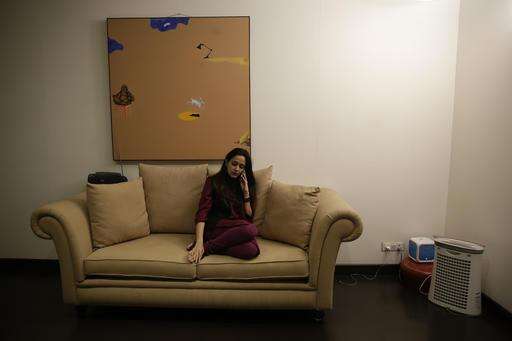
In this Wednesday, Nov. 30, 2016 photo, Rakhi Singh sits inside her home in New Delhi, India. The truth of New Delhi's toxic air finally hit home for Singh when her three-year-old son began to cough constantly early this year. She bought air purifiers for her home. When a thick, grey haze turned the view outside her home into a scene from a bad science fiction film last month she bought pollution masks. (AP Photo/Tsering Topgyal)
The Associated Press
In this Wednesday, Nov. 30, 2016 photo, an air purifier stand in the room of the three-year-old son of Rakhi Singh in New Delhi, India. The truth of New Delhi's toxic air finally hit home for Singh when her son began to cough constantly early this year. She bought air purifiers for her home. When a thick, grey haze turned the view outside her home into a scene from a bad science fiction film last month she bought pollution masks. (AP Photo/Tsering Topgyal)
The Associated Press
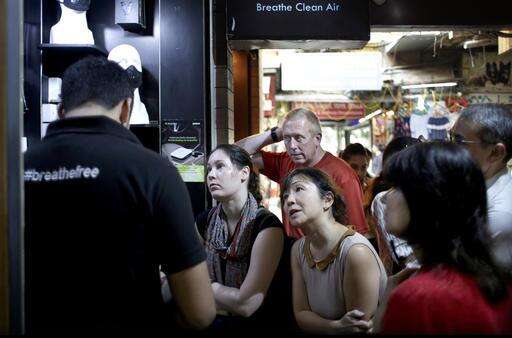
FILE - In this Nov. 4, 2016 file photo, customers stand in a queue for their turn to buy Vogmasks, the high-end pollution masks manufactured by the California-based company, in New Delhi, India. Despite the abysmal air quality hundreds of people have been queuing up outside the Vogmask store in a posh shopping area to spend as much 2,000 rupees ($29). The first week of November, when a thick blanket of toxic haze covered the city, did much to hasten that awareness. And with the awareness came a brisk uptick in the sale of air purifiers and pollution masks. (AP Photo/Altaf Qadri, File)
The Associated Press
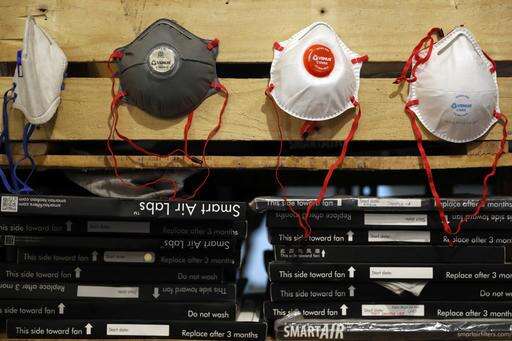
In this Monday, Nov. 21, 2016 photo, face masks are displayed at the SmartAir office in New Delhi, India. When SmartAir, the company that started selling low-cost, air purifiers in China in 2013 first set up shop in India last year they sold 1,000 pieces of their basic DIY model. This year in the first week of November alone they've sold about 500 pieces. The first week of November, when a thick blanket of toxic haze covered the city, did much to hasten that awareness. And with the awareness came a brisk uptick in the sale of air purifiers and pollution masks. (AP Photo/Tsering Topgyal)
The Associated Press
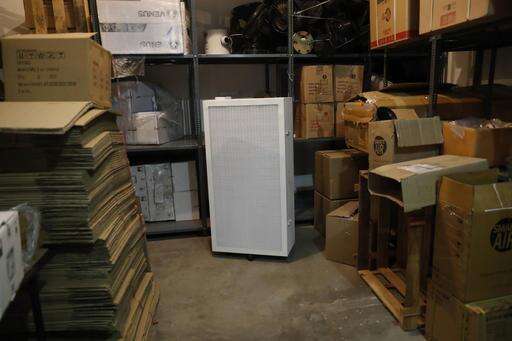
In this Monday, Nov. 21, 2016 photo, an air purifier waits to be shipped to a customer at the SmartAir office in New Delhi, India. When SmartAir, the company that started selling low-cost, air purifiers in China in 2013 first set up shop in India last year they sold 1,000 pieces of their basic DIY model. This year in the first week of November alone they've sold about 500 pieces. The first week of November, when a thick blanket of toxic haze covered the city, did much to hasten that awareness. And with the awareness came a brisk uptick in the sale of air purifiers and pollution masks. (AP Photo/Tsering Topgyal)
The Associated Press
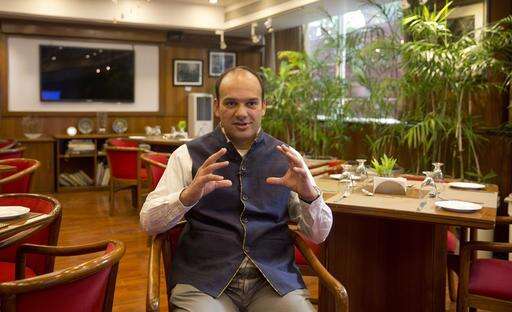
In this Friday, Nov. 11, 2016, photo, head of Breath Easy company, which provides solutions for pollution to individual homes and offices, Barun Aggarwal, talks to the Associated Press in New Delhi, India. When Aggarwal first started his business in 2013 he had no customers for months. Later that year the World Health Organization report describing Delhi as the world's dirtiest city was released. This year that number he expects to hit close to 5,000 customers with more local residents looking for solutions for their homes, Aggarwal said. (AP Photo/Manish Swarup)
The Associated Press
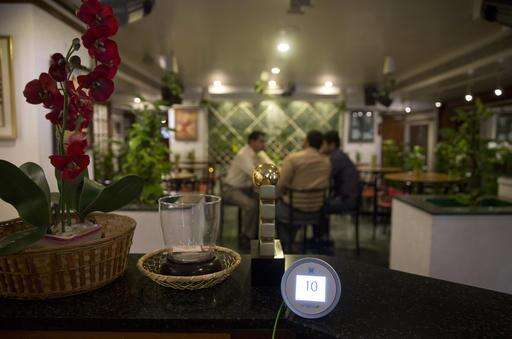
In this Friday, Nov. 11, 2016, photo, a pollution meter shows a perfect 10 as visitors to the Paharpur business centre, one of the Delhi's greenest office, sit in the lobby in New Delhi, India. The news that the Indian capital is one of the dirtiest cities in the world, having surpassed Beijing for that dubious record, is three years old. But the awareness that it's toxic enough to leave its citizens chronically ill and requires long-term lifestyle changes is relatively nascent. Air pollution is a serious problem in the India capital all year round but it's only when the cold winter air makes the toxic air visible that people respond. (AP Photo/Manish Swarup)
The Associated Press
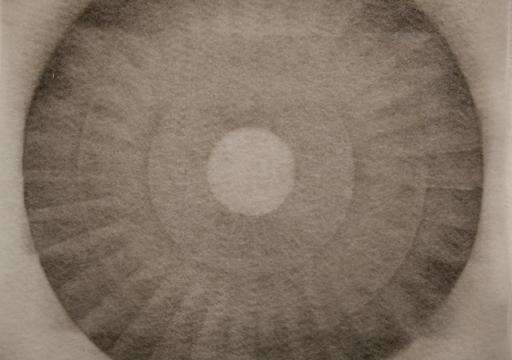
In this Monday, Nov. 21, 2016 photo, dust trapped on the pre-filter of a used filter is displayed on the wall of SmartAir office in New Delhi, India. When SmartAir, the company that started selling low-cost, air purifiers in China in 2013 first set up shop in India last year they sold 1,000 pieces of their basic DIY model. This year in the first week of November alone they've sold about 500 pieces. The first week of November, when a thick blanket of toxic haze covered the city, did much to hasten that awareness. And with the awareness came a brisk uptick in the sale of air purifiers and pollution masks. (AP Photo/Tsering Topgyal)
The Associated Press